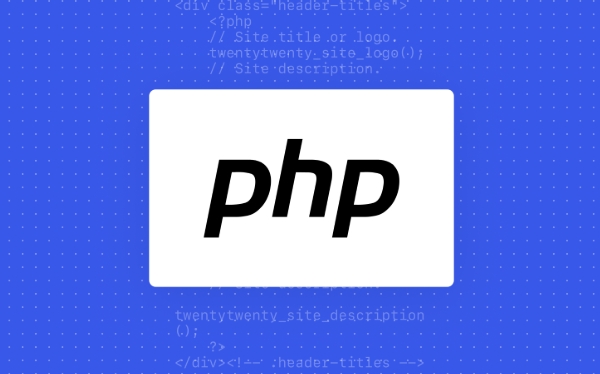The reasons for using microframework are fast startup, small resource usage, smooth learning curve, more free, and suitable for APIs and small projects. 1. Fast startup and small resource usage; 2. The learning curve is smooth and easy to get started; 3. No forced use of specific libraries or structures; 4. Suitable for APIs, small websites, and prototype development. Common PHP microframeworks include Slim, Lumen, Silex, and Flight. They are small but support middleware, routing definitions, and request response processing. Taking Slim as an example, after installation through Composer, you only need to create an App instance, define a route and run it to achieve simple functions. If your project only needs to do APIs or small sites, want to control dependency selection, do not require complex functions, and hope to deploy quickly, then a microframework is suitable; but if you want to do medium and large applications or need rich modules, a full stack framework such as Laravel is recommended.

PHP Micro Framework is a lightweight development tool designed for quickly building simple or specific functionality web applications. It does not provide a full set of functions like a full stack framework (such as database abstraction layer, user authentication system, etc.), but focuses on providing the most core functions, such as routing and request processing, allowing developers to more flexibly select and integrate other components.

Why use microframework?
When many people first start small projects or API services, they feel that using a full stack framework is too heavy, slow startup and many configurations, and it is difficult to learn. At this time the microframework comes in handy. Its advantages are:

- Fast startup, small resource occupancy
- The learning curve is smooth and easy to get started
- More free, not forcing you to use which libraries or structures
- Suitable for APIs, small websites, and prototype development
If you just want to write a simple backend interface or make a lightweight service, microframework is more suitable than a full-stack framework like Laravel.
What are the common PHP microframeworks?
The most popular PHP microframeworks on the market include:

- Slim : Very classic, well-documented, suitable for getting started and practical use
- Lumen : The micro-framework produced by the Laravel team has good performance and is suitable for those who are familiar with the Laravel ecosystem.
- Silex : Although the official no longer maintains it, it once had a great impact.
- Flight : Minimalist style, suitable for small projects that only want to handle basic requests
Although these frameworks are "small", they all support basic functions such as middleware, routing definition, request response processing, etc.
How to use microframework? Give an example
Taking Slim as an example, a basic "Hello World" page only requires a few steps:
- Installation: Install
slim/slimpackage through Composer - Set up routing: define access path and corresponding processing functions
- Start the application: Run the App instance
The code is probably like this:
require 'vendor/autoload.php';
$app = new \Slim\App();
$app->get('/hello', function ($request, $response) {
return $response->write("Hello World");
});
$app->run();This is the typical usage of microframework: simple, direct, and without extras.
Is the microframe suitable for me?
A microframework may be suitable if your project meets the following characteristics:
? You only need to do APIs or small sites ? Want to control dependencies and component selection ? Don't need complex user permission systems, ORMs and other functions ? Hope to deploy faster and run lighter
However, if you want to build medium and large applications, or if you need to use many ready-made modules (such as background management, user login, payment system, etc.), it is recommended to use a full stack framework like Laravel.
Basically that's it. Microframework is not omnipotent, but it is really convenient in the right scenario.
The above is the detailed content of what is a php microframework. For more information, please follow other related articles on the PHP Chinese website!

Hot AI Tools

Undress AI Tool
Undress images for free

Undresser.AI Undress
AI-powered app for creating realistic nude photos

AI Clothes Remover
Online AI tool for removing clothes from photos.

Clothoff.io
AI clothes remover

Video Face Swap
Swap faces in any video effortlessly with our completely free AI face swap tool!

Hot Article

Hot Tools

Notepad++7.3.1
Easy-to-use and free code editor

SublimeText3 Chinese version
Chinese version, very easy to use

Zend Studio 13.0.1
Powerful PHP integrated development environment

Dreamweaver CS6
Visual web development tools

SublimeText3 Mac version
God-level code editing software (SublimeText3)
 PHP Variable Scope Explained
Jul 17, 2025 am 04:16 AM
PHP Variable Scope Explained
Jul 17, 2025 am 04:16 AM
Common problems and solutions for PHP variable scope include: 1. The global variable cannot be accessed within the function, and it needs to be passed in using the global keyword or parameter; 2. The static variable is declared with static, and it is only initialized once and the value is maintained between multiple calls; 3. Hyperglobal variables such as $_GET and $_POST can be used directly in any scope, but you need to pay attention to safe filtering; 4. Anonymous functions need to introduce parent scope variables through the use keyword, and when modifying external variables, you need to pass a reference. Mastering these rules can help avoid errors and improve code stability.
 How to handle File Uploads securely in PHP?
Jul 08, 2025 am 02:37 AM
How to handle File Uploads securely in PHP?
Jul 08, 2025 am 02:37 AM
To safely handle PHP file uploads, you need to verify the source and type, control the file name and path, set server restrictions, and process media files twice. 1. Verify the upload source to prevent CSRF through token and detect the real MIME type through finfo_file using whitelist control; 2. Rename the file to a random string and determine the extension to store it in a non-Web directory according to the detection type; 3. PHP configuration limits the upload size and temporary directory Nginx/Apache prohibits access to the upload directory; 4. The GD library resaves the pictures to clear potential malicious data.
 Commenting Out Code in PHP
Jul 18, 2025 am 04:57 AM
Commenting Out Code in PHP
Jul 18, 2025 am 04:57 AM
There are three common methods for PHP comment code: 1. Use // or # to block one line of code, and it is recommended to use //; 2. Use /.../ to wrap code blocks with multiple lines, which cannot be nested but can be crossed; 3. Combination skills comments such as using /if(){}/ to control logic blocks, or to improve efficiency with editor shortcut keys, you should pay attention to closing symbols and avoid nesting when using them.
 How Do Generators Work in PHP?
Jul 11, 2025 am 03:12 AM
How Do Generators Work in PHP?
Jul 11, 2025 am 03:12 AM
AgeneratorinPHPisamemory-efficientwaytoiterateoverlargedatasetsbyyieldingvaluesoneatatimeinsteadofreturningthemallatonce.1.Generatorsusetheyieldkeywordtoproducevaluesondemand,reducingmemoryusage.2.Theyareusefulforhandlingbigloops,readinglargefiles,or
 Tips for Writing PHP Comments
Jul 18, 2025 am 04:51 AM
Tips for Writing PHP Comments
Jul 18, 2025 am 04:51 AM
The key to writing PHP comments is to clarify the purpose and specifications. Comments should explain "why" rather than "what was done", avoiding redundancy or too simplicity. 1. Use a unified format, such as docblock (/*/) for class and method descriptions to improve readability and tool compatibility; 2. Emphasize the reasons behind the logic, such as why JS jumps need to be output manually; 3. Add an overview description before complex code, describe the process in steps, and help understand the overall idea; 4. Use TODO and FIXME rationally to mark to-do items and problems to facilitate subsequent tracking and collaboration. Good annotations can reduce communication costs and improve code maintenance efficiency.
 Quick PHP Installation Tutorial
Jul 18, 2025 am 04:52 AM
Quick PHP Installation Tutorial
Jul 18, 2025 am 04:52 AM
ToinstallPHPquickly,useXAMPPonWindowsorHomebrewonmacOS.1.OnWindows,downloadandinstallXAMPP,selectcomponents,startApache,andplacefilesinhtdocs.2.Alternatively,manuallyinstallPHPfromphp.netandsetupaserverlikeApache.3.OnmacOS,installHomebrew,thenrun'bre
 How to access a character in a string by index in PHP
Jul 12, 2025 am 03:15 AM
How to access a character in a string by index in PHP
Jul 12, 2025 am 03:15 AM
In PHP, you can use square brackets or curly braces to obtain string specific index characters, but square brackets are recommended; the index starts from 0, and the access outside the range returns a null value and cannot be assigned a value; mb_substr is required to handle multi-byte characters. For example: $str="hello";echo$str[0]; output h; and Chinese characters such as mb_substr($str,1,1) need to obtain the correct result; in actual applications, the length of the string should be checked before looping, dynamic strings need to be verified for validity, and multilingual projects recommend using multi-byte security functions uniformly.
 Learning PHP: A Beginner's Guide
Jul 18, 2025 am 04:54 AM
Learning PHP: A Beginner's Guide
Jul 18, 2025 am 04:54 AM
TolearnPHPeffectively,startbysettingupalocalserverenvironmentusingtoolslikeXAMPPandacodeeditorlikeVSCode.1)InstallXAMPPforApache,MySQL,andPHP.2)Useacodeeditorforsyntaxsupport.3)TestyoursetupwithasimplePHPfile.Next,learnPHPbasicsincludingvariables,ech






